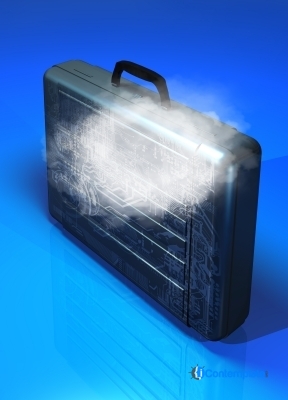In the dark, distant past of a few years ago, the idea of an all-flash system may have been an exciting prospect to an IT administrator, but one that was thought to be out of reach. The big reason was the weighty price tag, but today that’s no longer such a disincentive as enterprise companies are adopting flash array systems and finding new efficiencies in productivity. With success stories already in place, flash is being reconsidered by those who thought it an implausible solution. Due to the amount of data being created in the marketplace and within a company’s infrastructure, storage needs have grown enormously, and flash has been the answer for many organizations. In the coming year, this trend will likely increase as enterprises become more acquainted with the advantages that flash can provide.
The Year that was: Flash’s 2013 Achievements
Accomplishments count for a great deal and can be an effective way of measuring how valuable an application or system is. Anyone familiar with flash storage will be aware of two primary traits: speed and performance. Without the moving parts that hard disk drive (HDD) storage relies on, flash is quick and much more durable. The chances of outages from server failure or some sort of accident aren’t as great, leaving IT with fewer maintenance tasks on their to-do list.
Flash’s achievements can be seen in the health care, education and finance industries, and we’re not talking about a hybrid system, or one that combines both HDD and flash. Riverview Hospital in central Indiana saw storage improvements and an eight-to-one data reduction through an all-flash array. They’re also in position to expand their virtual desktops for more employees in the future with the system that’s already in place and that will serve as a long-term solution.
The Southeastern Technical Institute in South Dakota also found an all-flash array to be the best solution to the tasks facing them when it comes to distributing over 2,000 student laptops each school year. The IT department was spending hundreds of hours handling tasks such as upgrades and distributing software, all of which were accomplished much more quickly through a virtual desktop infrastructure based on an all-flash system. These are just a couple of examples that will likely become more prevalent in the coming year.
What’s in Store for 2014
With the year coming to an end, and predictions being thrown about the IT community, one thing is certain that will be agreed upon by anyone in the HDD versus SSD debate: Flash-based storage has arrived. The real question, though, is how much of a place it’s going to have in the day-to-day functions of businesses and organizations.
What an all-flash system can achieve is far from a secret and enterprise-level spending on storage is increasing. When it comes to speed, flash is the hands-down winner, and with access to data becoming near-instantaneous, employees will find that an all-flash array can provide better productivity, greater opportunities for collaboration and overall time-saving efficiencies. In conjunction with these advantages are the benefits of lower power costs and less storage space needed for a flash-based storage system.
These are the reasons why all-flash arrays will take a big step closer to being a standard for large-scale organizations as more companies adopt this strategy. It’s been predicted by Storage Switzerland founder George Crump that 2014 will be the year of flash, and others are making similar predictions on what the future holds for flash storage. The accomplishments made in 2013 will serve as an introduction to what will be occurring in the months and years to come.
Making the choice of an All-flash Array
As previously mentioned, cost was the hang-up that prevented flash from being adopted over HDD storage devices. Today the vendors offering all-flash packages intend to offer their products close to the same price range as hard disk drives, making it a more attractive choice. With flash’s speed, easier maintenance, and reliability, its innovative advantages are a step above the limitations of HDD storage and provide quality performance even beyond that of a hybrid approach. If you’re is ready to put the days of slow response times and limited storage behind you, then you can become part of what will inevitably be the future of enterprise data storage and take advantage of what an all-flash array has to offer.









